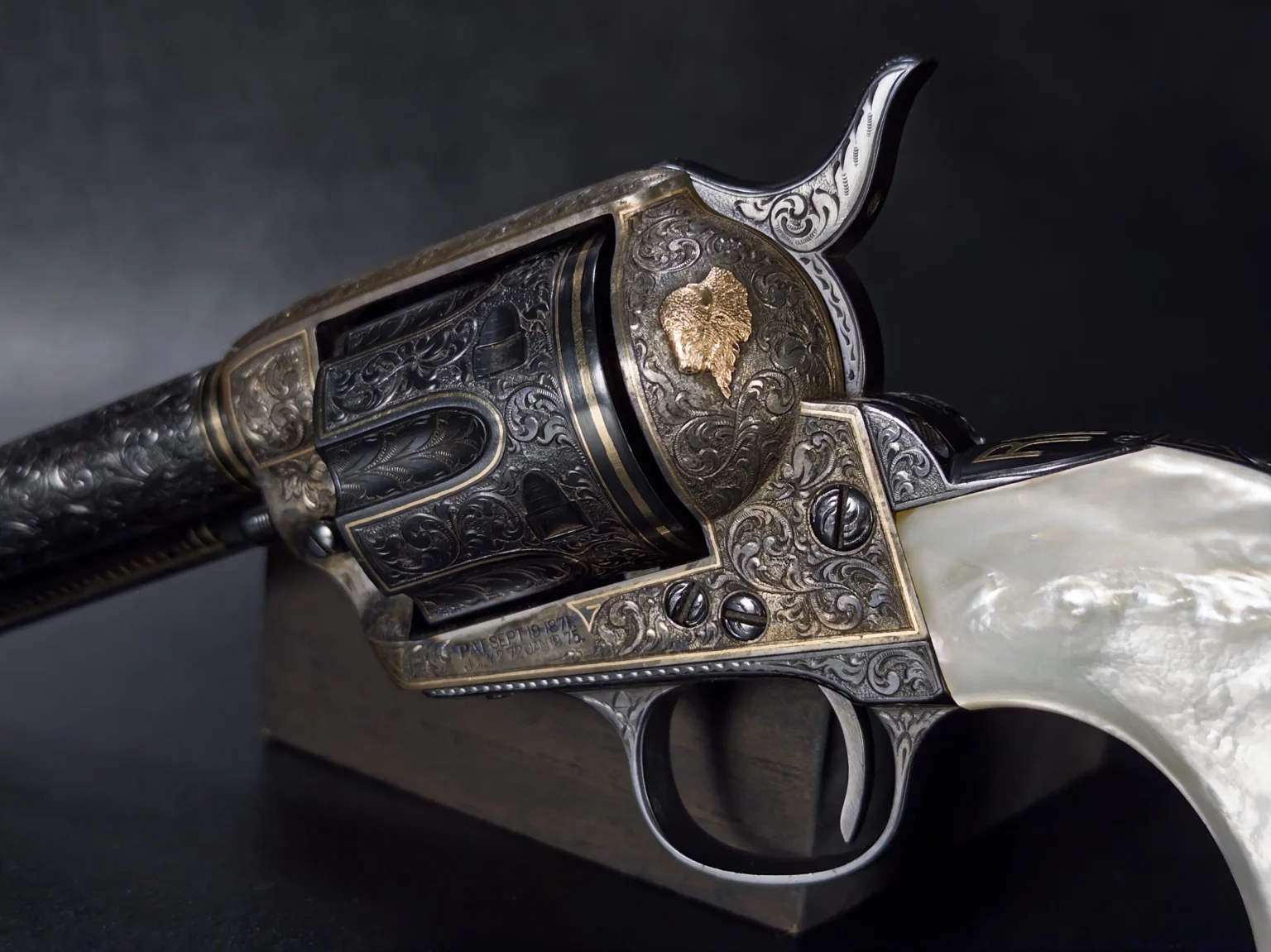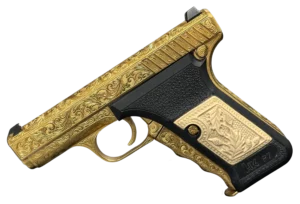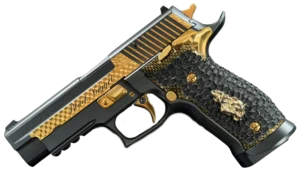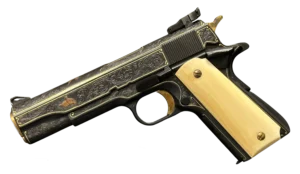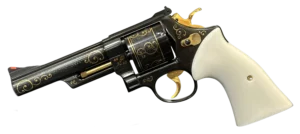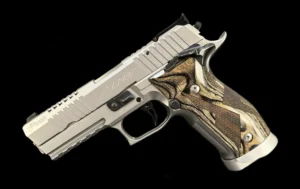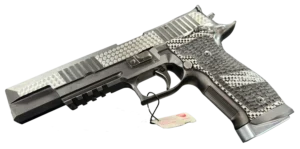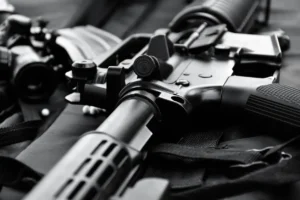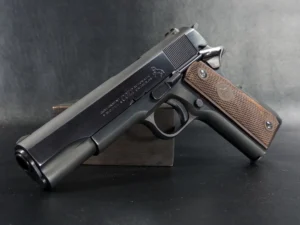Key Takeaways:
- Provenance Isn’t Just Paperwork, It’s the Whole Story: Look, you can buy a Colt SAA that’s mechanically perfect, but if you’ve got one with documented history? That changes everything. We’re talking about the difference between “nice old gun” and “the revolver carried by Deputy So-and-So during the Johnson County War.” The documentation doesn’t just increase the price; it provides a genuine connection to the past. And honestly? That emotional weight is worth more to many collectors than the money itself. Just ensure the provenance is genuine. Verify what you can, because exaggerated claims and straight-up fakes are out there.
- Auctions Are Thrilling, But They’ll Eat Your Lunch If You’re Not Careful: The adrenaline of bidding is real, and that’s precisely when people make expensive mistakes. Set your budget before you walk in, and I mean write it down, factor in all the fees, the whole thing. Then stick to it, no matter how badly you want that piece. Also, show up to the preview days. Handle the gun yourself. Check the serial numbers against Colt’s records. Read the catalog as if your bank account depends on it (because it does). A reputable auction house makes this easier, so don’t just go with whoever’s closest. Find specialists who actually know firearms.
- Quality Beats Quantity Every Single Time: You’ve probably seen collections where someone has 50 mediocre pieces versus someone with five incredible ones. Guess which collection holds its value? The collector with fewer, better-preserved guns wins. Original parts, clear provenance, and good condition —that’s what matters. Yes, it means being patient and passing on deals that seem reasonable but aren’t quite right, but building a collection of genuine, well-documented pieces is worthwhile. That’s what keeps its value over time and gives you something actually worth showing off. Plus, you’ll sleep better knowing you bought quality instead of just filling space.
Look, if you’ve ever held a Colt Single Action Army or even just seen one in an old Western, you already know there’s something special about it. That distinctive click-click-click-click when you cock the hammer? Pure magic. But buying one of these things at auction? That’s a whole different ballgame, and honestly, it can get weird fast if you don’t know what you’re doing.
The Peacemaker (yes, that’s what everyone calls it) arrived in 1873, and it essentially changed everything. Soldiers wanted it. Lawmen needed it. Outlaws… well, they got their hands on it too. Most came chambered in .45 Colt, though you could get them in other calibers if you knew what you were looking for.
Why This Gun Matters (And Why People Still Care)
Here’s the thing about the Colt SAA: it wasn’t just a gun. It was the gun at a moment when America was going through one of its most significant transformations ever.
The Civil War had just ended. The country was expanding rapidly westward. Railroads were stitching everything together, and suddenly you had this massive frontier where law was… let’s call it negotiable. The Wild West wasn’t just some Hollywood invention; it was real, messy, and dangerous. And the Colt SAA was right there in the middle of it all.
Understanding this context? It makes the gun more than just a collectible. You’re holding something that was there during a time when the country was figuring itself out, one dusty town at a time. It played a role in law enforcement, frontier justice, and, honestly, a fair amount of frontier injustice as well. History’s complicated like that.
The Design (Because Engineering Nerds Will Appreciate This)
The Colt SAA is beautifully simple. Six-shot cylinder, single-action mechanism, which means you’ve gotta manually cock that hammer before each shot. Not the fastest thing in the world, but there’s something deliberate about it. You’re not just spraying bullets. Every shot matters.
The fixed front sight and those classic lines give it this perfectly balanced feel. It’s not just functional, it’s genuinely beautiful to look at. And the engineering? Solid enough that these things survived everything the frontier could throw at them. Dust, rain, rough handling, they just kept working.
Interestingly, that durability is part of what makes authentication challenging today. A gun that has been in use for 150 years might look rough, but that doesn’t mean it’s not genuine. Actually, sometimes the wear tells its own story.
Calibers (More Options Than You’d Think)
Yeah, .45 Colt is the famous one. However, the SAA came in a variety of calibers: .44-40, .38-40, and others, depending on your specific needs. Military use required different specifications than those for civilian self-defense. Cowboys who wanted to use the same ammo in their rifle and revolver? .44-40 was your friend.
Collectors get really into this. Each variant represents a distinct slice of the gun’s history, a unique use case, and a different story. It’s kinda like car collectors who obsess over specific model years and trim level,s same energy.
Provenance: The Story Behind the Story
Alright, this is where things get interesting—and expensive.
Provenance is basically the documented history of the firearm. Who owned it? Where did it go? Was it part of anything notable? This stuff matters a lot.
Think of provenance as the gun’s biography. You’ve got ownership records, repair documentation, and any participation in historical events. The more detailed this history is, the more the weapon transforms from “old revolver” into “piece with a genuine connection to the past.”
And here’s where it gets real: a well-documented provenance can multiply the value of a Colt SAA at auction. I’m not talking about a modest bump; we’re talking serious money. A revolver that can be traced to a famous lawman or a significant event? That’s not just valuable, it’s priceless to the right collector.
But beyond the money, and I know this sounds cheesy, there’s something emotionally powerful about holding a gun that you know was carried by someone who lived through something significant. That’s not just history in a book. That’s history in your hand.
I’m not going to lie, that connection is what hooks a lot of people on collecting.
Buying at Auction (Without Losing Your Shirt)
So you want to buy a Colt SAA at auction. Exciting! Additionally, it can be potentially terrifying if you don’t prepare yourself.
Pick the Right Auction House
Not all auction houses are knowledgeable. You need one that specializes in collectible firearms and actually understands what they’re selling. Do your homework—check their track record, read their past catalogs, and see if they’ve handled significant pieces before.
A reputable auction house will provide you with detailed descriptions and high-quality photos. If the catalog looks like they just snapped pics with their phone and wrote “old gun, looks cool,” maybe keep looking.
Get Hands-On if You Can
Preview days exist for a reason. Go. Inspect the revolver yourself. Look for wear patterns, modifications, damage, or any other factors that might affect value or authenticity. Those markings stamped into the metal? They’re telling you something about the gun’s journey.
Honestly, handling the firearm gives you a feel for whether something’s off. Your gut matters here. If something feels wrong, dig deeper.
Set a Budget (And Actually Stick to It)
This is the hard part. Auctions are exciting. The adrenaline hits. Someone else is bidding against you. Suddenly, you’re spending $2,000 more than you planned.
Don’t do that.
Determine your maximum, including buyer’s premium, taxes, and other applicable fees, and record it. Literally. On paper. Then stick to it. You know what’s worse than losing an auction? Winning an auction you can’t really afford.
Provenance Documentation
Before you bid, ask the auction house for any documentation they have on the gun’s history, including previous owners, notable events, and other relevant details. Then—and this is crucial—verify it. Don’t just take their word for it.
Forged documentation exists. Exaggerated claims exist. Sometimes it’s intentional fraud, and sometimes it’s just someone passing along a family story that has been embellished over generations. Either way, verify what you can.
Authenticity: Don’t Get Burned
Let’s be real—there are fakes out there. Reproductions, parts guns cobbled together from multiple sources, modern recreations passed off as antiques. You need to protect yourself.
Serial Numbers Are Your Friend
Every Colt SAA has a serial number, and those numbers can reveal a great deal about the production date, original configuration, and whether it matches factory records.
Cross-reference the serial number with Colt’s records. If the numbers don’t line up, or if the gun’s features don’t match what should have been produced at that time, you’ve got a problem. This is your first line of defense against counterfeits.
Original Parts Matter
Are the barrel, cylinder, and grips original? Replacement parts aren’t necessarily deal-breakers, but they do affect value. Sometimes significantly.
Compare the parts to factory specs. Look at wear patterns. Do they make sense for the gun’s supposed age? A weapon from 1880 shouldn’t have pristine, unmarked grips unless they’ve been replaced. On the other hand, worn parts should exhibit the correct type of wear in the appropriate areas.
Weirdly enough, this is where experience really counts. You can read about wear patterns all day, but seeing them in person on a bunch of different guns? That’s how you develop the eye for what’s right.
When in Doubt, Get an Expert
If something feels off or even if it doesn’t, but you’re dropping serious money, talk to an expert. A good firearms appraiser or Colt specialist can spot things you’ll miss. They’ve seen hundreds of these guns. They know the subtle tells.
Yeah, it costs money to get an expert opinion. But you know what costs more? Buying a fake.
Investing in Rare Colts (If That’s Your Thing)
Some people collect for love. Some collect for investment. Most of us are somewhere in between.
If you’re considering collectible firearms as an investment, quality is everything. A well-preserved Colt SAA with original parts and solid provenance will always be more desirable than something beaten to hell with questionable history. That’s just how it works.
Keep Up With the Market
Auction results, market trends, what’s hot right now, this stuff shifts. Regularly check auction reports. Talk to other collectors. Go to gun shows. You need to understand where the market is and where it might be heading.
Specific variants experience periods of intense heat, followed by periods of cooling. Following these patterns helps you make smarter decisions about when to buy and, if you’re in it for investment, when to sell.
Network With Other Collectors
Building relationships with other collectors is invaluable. They’ve been where you are. They’ve made mistakes you can learn from. They are aware of guns coming up for sale before they hit the market.
Plus, honestly? It’s just more fun to share this obsession with people who get it. Your non-collector friends can only pretend to care about serial number sequences for so long.
The Messy Reality of Collecting
Here’s something they don’t always tell you: collecting isn’t a straight path. You’ll make mistakes. You’ll overpay for something. You’ll pass on a gun you should’ve bought. You’ll purchase one you shouldn’t have.
That’s part of it.
The collectors who’ve been doing this for decades? They’ve got stories about pieces that got away, deals that fell through, and auctions where they got caught up and spent way too much. Ask them. They’ll tell you.
The point isn’t to be perfect. The fact is to keep learning, refine your eye, and build a collection that holds meaning for you. Yeah, value matters, but so does the story you’re building with these pieces.
Final Thoughts (But Not Really Final)
The world of Colt Single Action Army collecting is deep. Deeper than you think when you’re just starting. There’s the engineering, the history, the market dynamics, the authentication challenges, the thrill of auctions, and the satisfaction of finding a gem.
It’s rewarding, no question. But it also works. Research, verification, networking, and staying current take effort.
Whether you’re a longtime firearms enthusiast, someone just getting into shooting and collecting, or even a history teacher looking to own a piece of what you teach, the Colt SAA has this timeless appeal. It connects us to a specific moment in American history that continues to capture our imagination.
So yeah, embrace the journey. Do your homework. Don’t rush. Learn from mistakes. And enjoy the hunt.
That’s the real collection, anyway, not just the guns you accumulate, but the knowledge you build and the stories you uncover along the way.
Happy collecting. Just remember to stick to that budget.
Frequently Asked Questions
Honestly? It depends so much that this question is almost impossible to answer. A rough, parts-gun example with no provenance might go for a few thousand. A pristine piece with documented history tied to someone famous? We’re talking tens of thousands, sometimes way more. The market fluctuates, too. What sold for $8K last year might go for $12K today—or $6K if the market’s cooled off. Your best bet is to watch a few auctions before you bid. Get a feel for what things actually sell for, not just what they’re listed at.
Of course. You don’t need credentials to appreciate these guns. But, and I say this with love, do your homework first. Don’t walk into an auction cold and start bidding without preparation. Learn the basics. Understand what you’re looking at. Talk to people who’ve been collecting for a while. You’ll make mistakes anyway (everyone does), but at least you won’t make the costly ones right out of the gate.
That’s totally fine. Sometimes you’ll find great pieces outside the auction circuit. The same rules apply; verify authenticity, check serial numbers, and ask about provenance. Gun shops vary wildly in their expertise, so don’t assume they’ve done the homework for you. And honestly? You might have more room to negotiate at a shop than at an auction. Worth exploring both options.
This is tricky because people have been faking documents since… well, forever. Look for original paperwork, not photocopies of photocopies. Letters of authenticity should come from recognized experts, not just someone saying, “My grandfather told me.” Cross-reference claims with historical records when you can. If someone says the gun belonged to Wyatt Earp, there should be a paper trail you can verify. When in doubt, hire an expert to review the documentation before making a purchase. Yeah, it costs money, but so does buying a gun with fake provenance.
Depends on what you mean by “worth.” Modern reproductions can be great shooters and fun to own, but they’re not collectibles in the same way. They lack historical value and will not be appreciated as much as genuine antiques. Some high-end reproductions are beautifully crafted and hold their value reasonably well, but they are not considered investment-grade pieces. There’s nothing wrong with owning them, but don’t confuse them with the real deal or pay antique prices for them.


